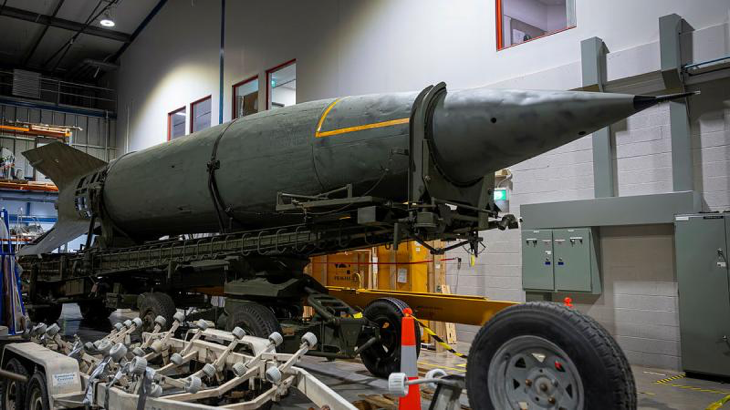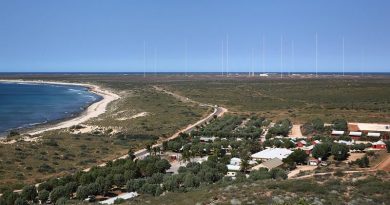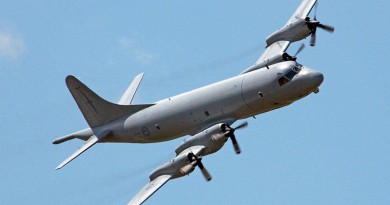Exciting piece of history on display

For the first time, the Australian War Memorial (AWM) will display a Nazi missile alongside a Lancaster bomber sent to destroy a top-secret V2 research facility during World War 2.
CAPTION: The Australian War Memorial’s V2 rocket on a Meillerwagen launching trailer inside the memorial’s storage hub in Mitchell, ACT. Story and photo by Corporal Jacob Joseph.
The German rocket and allied bomber will be part of a new display educating the public about Australia’s role in the Royal Air Force’s Bomber Command.
About 10,000 Australians fought in the skies over Europe during a campaign to cripple the German war machine.
Just after midnight on August 18, 1943, over the north-German island of Usedom, the air was filled with aircraft ready to drop their deadly payload.
Their target was Peenemϋnde, a top-secret Nazi R&D facility, where scientists were putting the finishing touches on Hitler’s new terror weapon, the Vengeance-class of rockets.
Among the almost 600-strong fleet of bombers soaring past exploding flak was RAAF 460 Squadron’s Lancaster W4783.
Nicknamed ‘George’ by its crew (after its Squadron code ‘AR – G’) the plane was lucky to return to base unscathed after dropping its thousand-pound bombs, as Bomber Command lost 44 aircraft in the raid, and 290 aircrew, including 10 Australians.
The mission was designed to destroy the experimental works and the factory workshops where the rockets were assembled, but it was also a “killing mission” according to AWM senior curator Shane Casey.
“Bomber Command planners wanted to kill as many scientists and technicians as they could,” Mr Casey said.
Despite the raid’s apparent initial success, the V2 program was only set back a couple of months.
The first rocket was fired at the recently liberated Paris almost a year later.
Germany launched thousands of V2 by war’s end, mainly against civilian targets.
“The Germans produced a weapon that was devastating – able to destroy entire city blocks – but not all that accurate,” Mr Casey said.
“Many analysts consider it a strategically unsuccessful weapon and a waste of resources that could have been used on more conventional weapons – it basically cost the same amount as the USA’s atomic bomb program.
“The allied air campaign directed against rocket and flying bomb sites in 1944 did, however, temporarily relieve pressure on German armies and cities.”
With Europe in ruins, the allies picked through the rubble to capture German scientists and equipment.
This is where the story of Australia’s V2 rocket, currently in storage at the AWM Mitchell warehouse and a stone’s throw from G for George, begins.
Australia received two V2s in the 1940s.
The first came to Fremantle in February 1947 before heading to Army’s old testing grounds in Monegeetta.
It would have been a strange sight for Canberrans when it was displayed outside Old Parliament House on its journey to Holsworthy Barracks, before ending up at RAAF Base Point Cook, where it was left to the elements during the 60s and fell into disrepair.
Remnants of this missile now rest in AWM’s storage.
The second rocket can be traced to an allied-occupied launch site at Cuxhaven in 1945, where it was used as an instructional rocket as part of the British Army’s Operation Backfire.
Museum curators could match their rocket with photos in the Backfire report.
The rocket was then sent to the British Long Range Weapon Association in South Australia for research purposes in 1947.
Mr Casey said it was periodically shown to the public, and although never marked for the War Memorial, it stayed within the Department of Supply until 1957 when it was stored at Duntroon.
In 1982 it was moved to storage in the ACT where it recently underwent restoration.
Thanks to Operation Backfire, Australia has an almost complete V2 Rocket and Meillerwagen launching trailer.
“People are going to be awed by it,” Mr Casey said.
“We’ve repainted it dark green, it will be elevated like it’s getting ready for launch, this menacing weapon is going to physically dominate the space.
“There’s a direct connection between the V2 program and the many Australians who were killed in Bomber Command, both attacking Peenemunde in aircraft like G for George and in the following year.
“We want people to understand this.”
.
.

.
.





